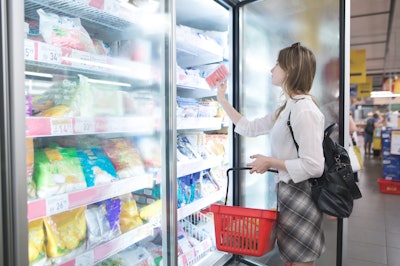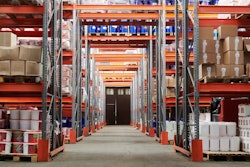
According to the Brick Meets Click/Mercatus Grocery Shopping Survey, online grocery sales rose from $4.5 to $8.1 billion between March and November 2020, a 79% increase. In the same timeframe, pick-up and delivery of online grocery purchases (excluding third-party shipping companies) rose 47%. Grocery is clearly not immune from the drastically changing consumer behaviors evident in industries spanning from retail to financial services. It does, however, present a unique set of challenges for grocers who must contend with satisfying consumer expectations for a personalized customer experience (CX) and immediacy while also dealing with perishable goods.
The challenge to get curbside pickup right is often more difficult than home delivery, as grocers must contend with a mobile customer who may show up at any time (vs. a fixed address with a flexible delivery window). Yet according to many studies, pickup is preferred over delivery. Most grocers have either added pick-up time slots, waived pick-up fees or added pick-up locations to cope with the surge in demand for this service. To satisfy increasing demands for contactless interactions, some grocers have installed automated pickup kiosks, where customers scan a code to retrieve items from the temperature-controlled stations.
A farmer’s market doesn’t have these challenges
A delightful customer experience will, for obvious reasons, preclude a customer from picking up an order to find melted ice cream, a bruised orange or a bag of sweet onions when yellow onions were specified. To ensure a satisfied customer, grocers must overcome a host of operational challenges; increased volume, picking, packing and end-to-end fulfillment directly relate to the placed order. Even before an order is placed, a grocer must ensure its website has real-time product availability updates. Post-order, it must arrange pickup times and locations in adherence with customer preferences, as well as send confirmations and notifications.
A seamless, personalized and hyper-relevant CX will also include website personalization such as personalized recommendations and image displays, customized substitutions, abandoned shopping cart reminders, “time to re-order” reminders based on usage algorithms or offers tailored to a specific customer’s behaviors.
Technology shortens the last mile
Technology helps solve many of these unique challenges, with many grocers turning to sales and operational planning (S&OP) solutions, integrated supply and demand networks and micro-fulfillment centers. Micro-fulfillment brings the product closer to the customer by using local stores as fulfillment centers, with dedicated space in-store to house popular items. Using automation, the store touts greater availability, increased efficiency and faster fulfillment. Micro-fulfillment centers also contribute to more tightly integrated supply and demand networks; algorithms that dictate which items are brought to the center – and when – are based on granular segmentation rules that reflect the preferences of a local audience. This helps ensure a “just-in-time” fulfillment and pickup, drastically shortening the last mile to the consumer. A gallon of milk in a micro-fulfillment center, for instance, might stay refrigerated (at an ideal temperature) until minutes before a customer is due to pick it up.
Personalization and data siloes do not mix
A modern grocery pickup/delivery that meets the lofty expectations of today’s digitally savvy consumers will overcome technology and process siloes. Siloed data, systems or channels will ultimately create a fragmented customer experience. If there is any daylight between customer-facing processes or interactions, a grocer loses the ability to engage each customer with relevance. But, relevance in the context of a seamless, personalized CX means far more than filing away a customer’s preferences. The ability to customize substitutions, for example, depends on a real-time engine that will refresh availability at a specific customer’s desired pickup location during an online session. Sustained, persistent relevance underpins a seamless customer experience throughout an entire customer journey.
Accustomed to frictionless experiences with brands in other industries, including retail and banking, consumers hold grocers to the same standards. Across the board, there is little tolerance for a one-size-fits-all, impersonal approach that seems to take a customer’s business for granted. According to McKinsey, personalization at scale (personalization for all, or a large segment of customers) results in a 1-2% lift in total sales for grocery companies by driving up loyalty and share of wallet among already-loyal customers. Personalization programs, the study shows, can also reduce marketing and sales costs by around 10-20%.
A single customer view and a next best action
As grocers are now creating micro-distribution, they need to match that to micro-segments, ideally a segment-of-one. To meet the rising expectations for personalized experiences, grocers must unify all customer data and orchestrate relevant interactions at the speed of the customer. With online grocery purchases and curbside pickup, the grocery business is increasingly moving to a combination of digital and physical touchpoints. In this complex environment, moving at the speed of the customer requires real-time decisioning.
A checkout optimization to reduce abandoned shopping carts, for example, will be far more effective if the grocer is able to recognize the partial cart abandonments, and is able to recognize consumers across anonymous-to-known journeys. The interaction will be more effective still if, in addition to recognizing the consumer – and not just the device ID – the grocer also knows the customer’s preferences, behaviors and transactions. By knowing everything there is to know about the customer in an easily accessible single customer view, a grocer will be able to deliver a next-best action for an individual customer that is attuned to that specific customer journey.
Delivering consistent relevance and a personalized experience for online grocery purchases and delivery/pickup is fraught with challenges unique to the industry. As a consumable good and with orders containing perhaps dozens of SKUs consumed at varying rates, grocery orders rarely duplicate – making every customer journey unique. Integrating data sources into a single customer view to know everything there is to know about a customer is an important step for optimizing and guiding each journey to a natural – and profitable – conclusion.




















